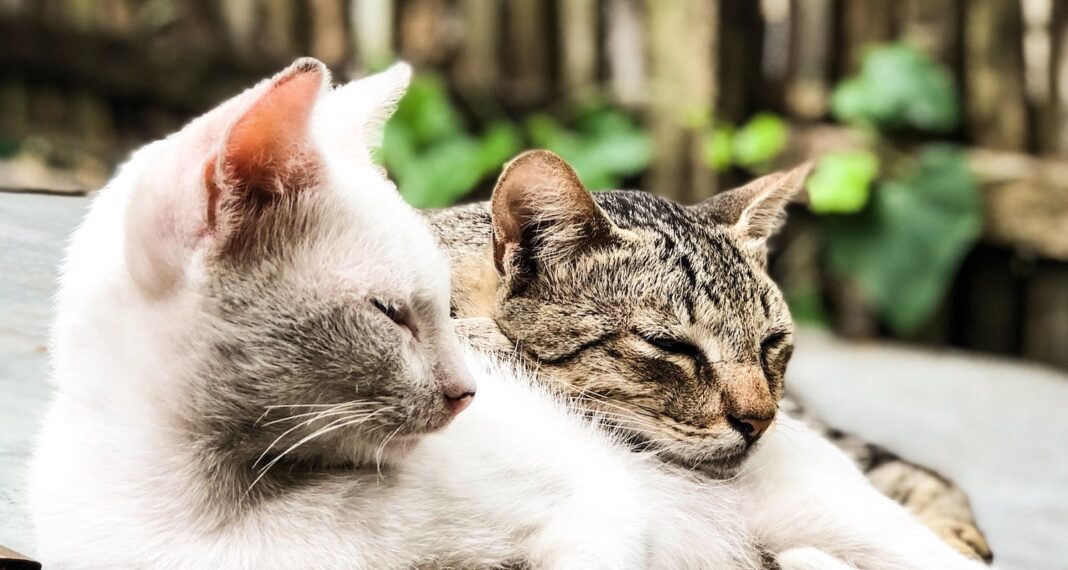Cats are extremely clean animals that immediately want to remove any filth that they encounter during their day. Naturally, cats will lick themselves and wipe the dirt away with their tiny paws. However, you can do a much more efficient job with the right shampoos and moisturizers inside your own bathroom.
If you have outdoor cats, be sure to discourage pests such as coyotes, possums and raccoons by bringing cat food indoors at night. Feed your cats first thing in the morning, and make sure there is no food left at nightfall. This will keep your cats safe from attack and illness.
To safely help an old cat feel comfortable, place a heated tile under its bed. Just heat a one-foot square terra cotta tile in your oven at about 200 degrees for 15-20 minutes. Wrap this in a towel that’s old and then place it under the bed the cat sleeps on. You can even switch it out every few hours.
As your cat gets older, changes in behavior may signal pain. If your cat doesn’t like to jump or climb any more, it may be in pain. If your cat stops taking care of grooming or stops using its litter box, pain may be the cause. Be sure to have your older cat checked out by your vet if you notice behavior changes.
Give your cats easier access to a window in order to keep your curtains from getting scratched. Putting vertical blinds up will allow the easiest access for your cat, but if you need to keep your curtains, use a lightweight rod that will fall if your cat attempts to climb the curtains. It will keep both your curtains and your cat safe.
Do not assume that because a medication is okay for you to take, that it is safe for your cat as well. Many medications made for humans are lethal to cats, such as acetaminophen containing drugs and aspirin. Always check with your veterinarian before you give your cat anything.
Get a scratching post to keep your cat from tearing up your carpet. If you can, get a post that does not have the same type of carpet that is on the floor of your home, so your cat doesn’t associate the two. Instead, get a post that is covered in cardboard, sisal, or thick rope.
Put your cats’ litter box where it is most acceptable to him. Don’t put it in a busy area, and keep it away from your cat’s food. You should also make sure there is ample ventilation to avoid odors. Your cat and you will appreciate it.
You should think again before allowing your cat to go outside. This can put your cat in an unsafe position. You cat might pick up pests or fleas. Your cat may be targeted by another animal, or get injured by a vehicle or another person. If your cat has to be outside, make sure it is only in a small area near the house.
There’s always a chance that you cat can slip outside your home and become lost. This can be prevented with a breakaway collar. The collar includes an ID, featuring your name, phone number, and address. If the cat is found, anyone can easily contact you and return the cat to you thanks to the information on the collar.
Do not try to bathe a kitten that is less than four weeks old. It is not very easy for a young kitten to regulate the temperature of their body. This may result in the kitten getting a chill. To be on the safe side you should wait between 12 and 16 weeks after they are born to bathe them for the first time.
Sometimes you need to give your cat a pill. Some cats are harder than others, but you should trim their nails first. Then hold the head, open the mouth, and put the pill in. Then blow on the cats face. This will likely make the cat lick its nose, and the pill will go down naturally.
Be sure to carrier train your cat. Punishment affects cats differently from dogs. Cats are better trained by using patient encouragement. Put their favorite toy and blanket in a carrier. Leave it somewhere they always go to. Over time, the cat will feel comfortable and go inside the carrier. Let it happen naturally or with only mild coaxing. Do not get angry. It will be simpler to transport them using the carrier.
Get a drinking fountain for your cat. Cats like running water in the wild, as well as in the home. Cats generally respond better to a stream of water. Actually, you will see many cats prefer running tap water from the sink instead of the water bowl. Fountains keep the water cool and clean.
While cats can be finicky, you should not encourage this behavior. A cat will eat the exact same cat food their whole life if it is tasty and nutritious. You do not need to mix up the flavors. Doing this can encourage the cat to skip certain foods they previously ate and wait for another.
If your cat seems excessively thirsty, take him to the veterinarian to get him checked out. Excessive thirst is a common symptom of diabetes in cats, and this often missed diagnosis can cause serious complications if left untreated. Always keep a close eye on your furry friend’s water intake, and if you are concerned get him to the doctor to have a look.
Most cats do not like water at all and will go crazy if their owner tries placing them in a bath. This is why you have to get the cat accustom to water and teach them that it’s not a bad thing. Once your cat gets a look at its clean, shampooed fur, it’ll never be afraid of water again!

